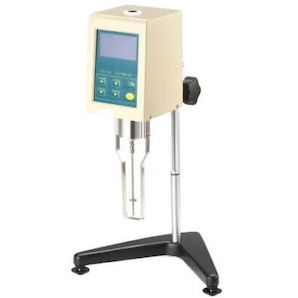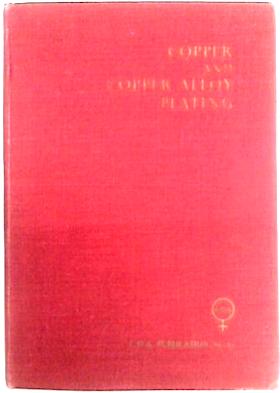
-----
Copper Pyrophosphate Plating: Orthophosphate & potassium pyrophosphate in bath
Quickstart
Although copper plating can be done with a very simple & effective copper sulphate "bright acid copper" process, this can' t be used directly on steel, aluminum, or zinc components because copper is more 'noble' than those metals and will spontaneously "immersion deposit" on them, with poor adhesion.
The traditional answer is to do an initial copper strike in a cyanide copper plating bath. But cyanide is a very dangerous and highly regulated material. One alternative is to use a copper pyrophosphate, or other proprietary non-cyanide copper plating process.
Q. I am currently operating a copper plating bath based on copper pyrophosphate, with the following components:
Copper pyrophosphate
Potassium pyrophosphate
Potassium nitrate
Ammonia
Deionized water
I'm using a nickel anode in the setup. Over time, I've noticed a gradual decrease in plating efficiency and overall bath performance. I suspect this may be due to the depletion of certain bath constituents, but I'm not sure whether I should primarily replenish copper pyrophosphate, potassium pyrophosphate, or other components.
Could anyone advise on:
-What specific additions or treatments are typically used to restore bath activity?
- Any guidance or shared experience would be greatly appreciated.
⇐ answer?
Best regards,
- Istanbul
April 7, 2025
⇩ Related postings, oldest first ⇩
Q. I'm new to the electroplating industry and would appreciate the assistance of some experienced professionals and/or any academics who may have any insight into stabilizing or regenerating a copper pyrophosphate/tetrapotassic pyrophosphate plating bath used in a sequential plating process. Every two or three months, the bath must be decanted to allow the manual removal of a sky blue sludge that is referred to as "ortho phosphate".
I remember reading a reply from Pune, Mah., India to another thread (#67/34) where reference was made to having converted ortho phosphate to pyro phosphate because no local supplier for the "pyro" could be found.
This makes me wonder if there isn't some commercially acceptable technique to reconstitute the lost "pyro"from this sludge. Or, even better, if there isn't an "additive" available that would inhibit the reaction that results in the formation of the ortho phosphate that would not interfere with the copper plating onto the steel substrate. This loss of copper pyro and tetrapotassic pyro phosphate is a significant cost of doing business. Surely someone has made significant progress in this area by now. We are very diligent about controlling temperature, current, fluid density, etc., but the sludge still forms at different sites in the bath. Its formation is apparent on the copper anodes.
Does it help if the anodes are wiped clean periodically? I.e. is it self propagating? Others have noted the formation of the sludge upon adding room temperature water to adjust the bath for evaporative losses. Would preheating the make-up water help?
Any suggestions or authoritative references on dealing with this problem would be very much appreciated.
by Langford & Parker
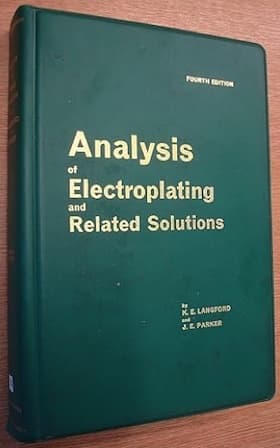
on Amazon
or AbeBooks
(affil link)
Thank you.
Donald R. StewartScottsburg, Indiana, USA
2001
A. I worked with pyro copper for 5 years, plating printed wiring boards, and yes, that's what the pyro baths did for us too. It was quite a mess, and very expensive.
I don't believe anyone ever was able to do better that what you are doing. How about looking into some of the proprietary cyanide free baths sold today? Are you adding all chemicals according to the best practice discussed in the general textbooks for formulation? The best you can do right now is run the bath at recommended levels, anodes, etc., and live with the problem.

Tom Pullizzi
Falls Township, Pennsylvania
by Terrance H Irvine

on eBay or Amazon
or AbeBooks
(affil link)
Q. I have been searching the forums for information about pryo copper plating. This thread has come close to answering a question that our local suppliers cannot.
The question is: The sky-blue sludge referred to by the original poster, is that in fact copper orthophosphate?
We believe from our own tests (our supplier doesn't test for this) that our orthophosphate level is 61 g/l (This test is done by measuring the specific gravity of the solution when all salts are in the acceptable range).
We have for the first time in five years found a blue sludge in the bottom of the tank. A sample of the solution, cooled to room temperature, becomes "jelly like" and cloudy.
These we believe to be signs of orthophosphate formation. I would really just like to know for sure the answer to the above question. A confirmation that what the original poster believed was orthophosphate is actually so.
⇐ answer?
- Auckland, New Zealand
2007
Q. Hi, I have a small Electroplating Shop in Ventura. I'm currently producing 14" Copper Master Blanks for a customer, and I have a small (140 gallon) Pyrophosphate Cu Bath.
I had my bath analyzed by Atotech USA (as they supply the chemicals used in my bath) and my chemicals were fine, but there was a result of "7" of Orthophosphate, when it should have been "0".
My bath is made up of C-10XB, C-11XB, Pyrobrite PY61H and Ammonium Hydroxide.
I was previously (about 2 months ago now) getting great sounding coppers, but now the sound readings are too high (passing rate is -66 is on a 1.6 ml groove, these are -64 or -65). There is also a swooshing sound on one part of the Copper.
I'm assuming the swooshing is due to the Orthophosphate in my Copper, but I'm truly uncertain as I've never run into it before.
I also don't really understand what Orthophosphate is, and how to get rid of it.
I've been down for the last 2 months now, which is a bummer. Any help on the above would be greatly appreciated.
Thanks.
- Ventura, California, USA
January 9, 2010
A. Hi Dante,
Pyrophosphate decomposes to orthophosphate and there will always be some present. In small to moderate concentrations it has no effect on performance. However as it increases it begins to reduce the current density at which "burning" occurs. This is because the orthophosphate significantly increases the viscosity of the bath and reduces the transfer of copper and brightener to the plated surface.
There is no way of converting the ortho back to pyro in the bath. The only remedy is a part/total dump. The factors which affect the rate of decomposition are low pH (less than 8.6) insufficient anode area (very bright, electropolished, anodes) and high temperature.
In well maintained baths used for thin deposits, the drag-out will normally keep the orthophosphate at an acceptable level. But in electroforming baths (thick deposits), drag-out for a given plated surface area is much, much lower and the probability of too much ortho accumulating is greater.
I don't know what Atotech's figure of "7" means. I have some guidelines for acceptable ortho and if you give the complete analysis perhaps I can extract the information I need to make a useful comment.
Harry

Harry Parkes
- Birmingham, UK
![]() "... perhaps I can extract the information I need to make a useful comment."
"... perhaps I can extract the information I need to make a useful comment."
Yes, Harry, more info about this "7" would be helpful, but I for one have already found your posting very enlightening. Thanks!
Regards,

Ted Mooney, P.E.
Striving to live Aloha
finishing.com - Pine Beach, New Jersey
Ted can be retained for immediate
answers or long term project help
Q. Hi, thanks for your reply. I didn't realize that was what the orthophosphate was. The analysis that I got back from Atotech is as follows:
Copper Pyrophosphate 144 Gal
Result/Units - Component - Range, Target
2.6 oz/gal Copper 0.8 - 1.4, 1.0
18.1 oz/gal Pyrophosphate 20-40, 25.0
7 P2O7/Cu Ratio 7-8, 8
7 oz/gal Orthophosphate - 0.0
8.5 pH (electrometric) 8.2-8.7, 8.4
0.33 oz/gal ammonia
⇦ on
eBay or
Amazon [affil link] Gas 0.05-0.30, 0.16
I hope this is what you are looking for.
- Ventura, California, USA
A. Yes Dante this is the information required.
Now that we know that the "7" has units of "oz/gal" it is possible to comment. 7 oz/gal (52 g/l) orthophosphate is very high and is most probably the cause of your problem. I regard 4 oz/gal (30 g/l) as being a reasonable maximum value. There is no hard and fast figure. Some users who plate simple shapes and use relatively low current densities might have no difficulties at 7 oz/gal. But for most users it is too high.
As I said previously, dumping is the only answer. There is much to be said for frequent small dumpings to keep the bath in a constant condition rather that doing total dumps and then allowing the orthophosphate to rise to critical level again. If it were my bath I would dump half.
The question of pH is a vexed one. A ph of 8 is probably best for plating. However the rate conversion of pyro to ortho increases at lower pH. Above 9 the stability is better but plating performance especially at lower current densities falls off. My preference is for 8.6 to 8.9.
Anode current density is important. With too high an anode CD (low area) the copper content and pH will fall and the anode electropolishes. Too high and the opposite happens and the anode becomes coated with a brown sludge: the brightener may precipitate on this sludge making control difficult. The ideal condition is a slowly rising pH and anodes having a clean pink appearance with slight brown film revealed when wiped with a finger (like light dust on furniture).
If this were a bath doing typical decorative plating I would blame bad control for the ortho being so high: most such baths never need to be dumped. But with electroforming and little drag out, a significant rise is likely. Whether your rate of rise is excessive is impossible to say.
Finally, you are probably thinking about cost of replacement and disposal of waste: I don't have any answer except "grin and bear it".

Harry Parkes
- Birmingham, UK
![]() Hello Harry,
Hello Harry,
Thanks for this very interesting and as Ted said, "enlightening", posting.
Regards,
- Sydney, Australia
Q. Hi Harry, thanks for your answer and insight. This is real good as I'm starting to understand this better.
I am going to send a new sample in to Atotech for testing to see how much Orthophosphate is now in the bath, as I found out that their readings were incorrect (just found this out yesterday after calling them as there was a couple of things I did not understand about it).
A question I have for you is, I wasn't plating for about a month. In that time I only added water to the tank, about 15 gallons every 2 or 3 days. Would this be equivalent to dumping half the tank or not. My pH was considerably lower (it was previously at 8.6 and then when I tested it after the month of not plating and only adding DI water, it was at 7).
I wanted to see if you had any input on this.
Also, do you know if a swishing sound would result on my Copper Masters due to the Orthophosphate? This is the last problem I am having before I get up and running again. This swish goes similar to (this is an example only) -66db, then one area goes -64db, then back to -66db, then down to -64db, etc. That swish is what my customer doesn't want. I think it might be from the Orthophosphate but could be wrong. Potentially you have some insight into this?
If I can't get this resolved, I will dump the tank and start anew, but wanted to try a few more things first and see if possibly I could get some answers to the above questions as well.
Thanks for your help.
foreman - Ventura, California, USA
A. Hi Dante,
No, you will not have achieved a dump. The concentration of ortho (and everything else) as you evaporate down will rise and then fall when you top-up with water. There will be some break down of pyro to ortho, as already explained, causing the ortho to rise. The only way to bring down the ortho is to remove all or part of the bath and replace the lost water, copper and potassium pyrophosphate salts and other additives.
If the bath is not needed, allow it to cool. The break down of pyro is much, much lower at room temperature.
It is important to bring the bath volume to the working level and stir well before providing a sample for analysis.
The change in pH that apparently took place during the period when the bath was unused would certainly promote a rapid increase in ortho generation. But I don't believe that it happened. Much more probable is an error in measuring. It would take a lot of acid to cause such a fall. I'll make some comments on the measurement of the pH of pyro solutions if you think it would be helpful.
I can't comment on the swishing sound. I can only say that high ortho will reduce the quality of the deposit. Sounds (if you will excuse the pun) like a good research project.
I am curious as to the errors in the Atotech analysis. Will you let us know the new results when you get them? As a check on the analytical result for ortho I calculate the expected specific gravity and compare it with the actual value. In some ways this calculation is more useful because it includes any sulphate from pH adjustments and will also affect the viscosity. If you wish, I will crunch the numbers for you if you supply the copper (Cu), Pyrophosphate (P2O7) and SG measured at standard temperature. You are welcome to the calculation method or even to have it as a small executable file.

Harry Parkes
- Birmingham, UK
Q. Hi guys, thanks for your help. It's been a month since the last answer to this post and I wanted to update with what has since happened:
a) I never ended up sending the sample to Atotech. Instead, I was trained on how to analyze the chemicals myself (bar the Orthophosphate). So I have been doing that now.
b) The error from AtoTech's Lab was just what the ranges were supposed to be. The C-10 (Cu Metal) is supposed to be between 3-4 oz/g , but the original report said 1 oz/g. When I added the right amount of C-10 (2 oz/g) the Copper was much improved, but not quite there.
c) I added some more C-11 to get it to where it needed to be.
d) In reviewing the substrates that we were using, I noticed that they were slightly bowed to be begin with, and I had several sanded down a bit until they were flat and no longer bowed.
e) After running the above changes, I am now getting many good Coppers. Out of 17 a week, I get 12-13 passes, which is better.
The only problem I am having now is pitting. Sometimes its minor and not a problem, but sometimes its too much and you can hear a "crack and pop" type sound when playing it back. I wonder if this is from the Orthophosphate or if it's a contamination problem or the like?
Thanks.
Dante
- Ventura, California
A. Hi again Dante,
Pitting is not normally a problem with copper pyro. Inadequate cleaning is usually the cause when it occurs.
Orthophosphate is not a contaminant as, for example, copper in nickel plating solutions. It increases the viscosity of the bath and reduces the rate of replenishment copper and brightener at the cathode. This limits maximum current density and brightening/grain refining. This could be your problem. You did not say in your posting whether you had done a partial dumping: I guess not.
You do not need to analyse for orthophosphate in order to an idea of the concentration and the likely effects. Here is a simple calculation:-
Divide the pyrophosphate in g/l, expressed as P2O7, by 687 and add 1. You will get the specific gravity of a new, ortho-free bath. For example, a bath containing 166 g/l P2O7:
166/687 = 0.24. Add 1 = 1.24 = calculated SG
If you prefer US oz/gal, the figure is 92 rather than 687.
Then compare the calculated value with a measured one.
Here is a an extract from a computer generated report (saves me retyping). It partly repeats comments given above above:
The difference between is measured and calculated SG is due to mainly orthophosphate. The effect of high ortho is to increase the viscosity of the solution. This limits the maximum current density before burning. There are no hard and fast rules. But, as a guide:-
A difference of less that 0.05 has little effect.
A difference of 0.05 to 0.10 will have growing effect.
A difference of 0.10 to 0.15 becomes increasingly severe and there are few circumstances where the bath will be useable without significant loss in performance.
The only way to remove orthophosphate is by dumping all or part of the bath and adding new chemicals.
Well maintained baths, especially with respect to pH, will run without the need to dump.

Harry Parkes
- Birmingham, UK
Q. Hi Harry, you mentioned you could crunch the numbers for an Orthophosphate analysis.
My test results are:
P2O7 23.83 g/l
Cu Metal 3.09 g/l
How would I calculate existing SG of the pyrophosphate in the bath with these test results?
Thanks.
Dante
- Ventura, California
February 25, 2012
A. Hi Dante. Harry probably missed your followup, it was 2 years later -- and he's probably exhausted from 4 fabulous, highly detailed, replies in a row 🙂
I'm not relly an expert on this ... but I think that although you can calculate the expected specific gravity of new (pure) solutions as Harry described, that you must measure the S.G. of your current (extant) solution, either with a hygrometer or by weighing a given volume of solution. The milligrams divided by the cubic centimeters is the specific gravity.
Regards,

Ted Mooney, P.E.
Striving to live Aloha
finishing.com - Pine Beach, New Jersey
Ted can be retained for immediate
answers or long term project help
Multiple threads merged: please forgive chronology errors and repetition 🙂
Optimum conditions for electroplating copper with copper pyrophosphate bath on steel substrates?
Q. I would like to ask if anyone who works on copper pyrophosphate baths has found the optimum conditions (temperature, pH, proportions of reagents) I do not know how to control the bath due to the orthophosphate. My first samples had very bad adsorption on the steel substrates.
What do you suggest to do?
Thank you.
chemical engineer - Italy
2006
Tip: This forum was created to build camaraderie through sharing of tips, opinions, pics & personalities.
The operator & readers who are here for that often won't engage with anonymous posters.
Multiple threads merged: please forgive chronology errors and repetition 🙂
Expected life of copper pyrophosphate plating bath
Q. Hello,
Does anyone have experience on copper pyrophosphate electroless ^electrolytic bath? I'd like to know how fast copper pyrophosphate hydrolyses to orthophosphate in bath?
University of Oulu - Oulu, Finland
2003
by N. Kanani
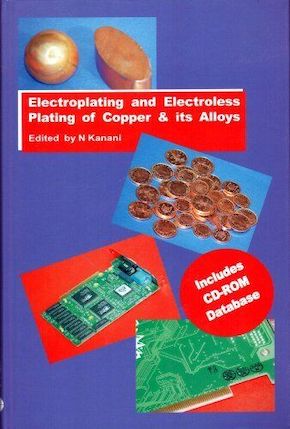
on eBay or Amazon
or AbeBooks
(affil link)
A. Copper pyrophosphate is electrolytic, not electroless. It may (although I haven't heard of it) be possible to use hypophosphite as a reducer in a copper electroless bath (generally, HCHO is used as the reducer).

James Totter, CEF
- Tallahassee, Florida
A. I don't know of an electroless copper bath based on pyrophosphate, but that isn't to say it doesn't exist. However, all pyrophosphate baths should be run at less than 60 °C otherwise the pyrophosphate hydrolyses and dissociates to orthophosphate. Hope this helps you.

Trevor Crichton
R&D practical scientist
Chesham, Bucks, UK
Q. Hello,
I noticed that there was a mistake in my original posting. I meant electrolytic copper bath, not electroless. Sorry.
Mia Kumpumäki [returning]University of Oulu - Oulu, Finland
2003
A. Dear colleague, if you support pH 9-10 and the temperature 40-50 °C, you may use this bath for ages.
Vladimir Krasikov- St.Petersburg, Russia
August 29, 2008
Can't dissolve Tetrapotassium Pyrophosphate into Copper Plating bath
Q. We use a Pyrophosphate Copper in our plating process. We plate Zinc based castings and I am having trouble dissolving the Tetrapotassium Pyrophosphate when making additions. It seems to stay suspended in solution, coming out in filtration or settling on the bottom of the tank.
Any suggestions on how to fix this would be much appreciated.
Electoplater - Wellington, New Zealand
May 23, 2011
A. Hi Wade,
Are you trying to dissolve the potassium pyrophosphate at room temperature or are you bringing the temperature of the solution up at all? You should bring the make up water up to 50 °C before adding any potassium pyrophosphate. You will find it difficult to get what is in solution to dissolve, even with warming now, don't ask me why, but it is a devil to get to dissolve when wet.
Aerospace - Yeovil, Somerset, UK
A. Hi Wade,
I agree with Brian's comments and yet something does not feel right. If the potassium pyrophosphate if finely divided and does not clog the filter then it should dissolve. I suspect that the insoluble matter is not potassium pyrophosphate. I think that either you are not adding potassium pyrophosphate or you have insoluble matter which you are confusing with the potassium pyrophosphate that you have added.
Try a lab beaker scale test with hot copper pyrophosphate solution and adding potassium pyrophosphate slowly with good stirring and see if you still have undissolved "potassium pyrophosphate"
Best wishes

Harry Parkes
- Birmingham, UK
Q. I am running a copper/pyrophosphate bath and I go out of ratio on my Cu-Pyro every three weeks or so and have to add about 20 liters of C-11XB Pyrophosphate to get it back in range. What I don't understand is why it would be going low so often and if this is an indicator of some other out of balance issue I have in the bath.
Does anyone know what would cause this or is this a usual type of replenishment that would be needed?
Thanks very much,
Ben
- Los Angeles, California
June 10, 2012
A. This response is three years late, but for the sake of completeness and to assist others who may search this, here we go: The ratio going low indicates copper concentration increasing due to anode dissolution. If your anode area is too high this will happen rapidly. Try reducing your anode area to slow the ratio decrease. Harry also discussed this earlier in the thread.
Simon LeeRigg Electroplating Ltd - Auckland, New Zealand
December 7, 2015
Q. @Harry: Can you help with copper bath for DMM recording discs?
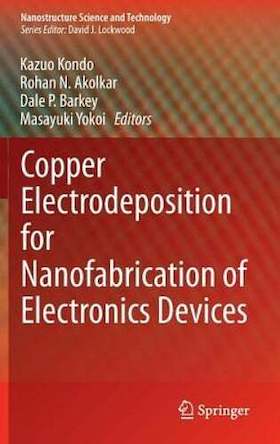
on eBay or Amazon
or AbeBooks
(affil link)
Shop - Manila
July 27, 2024
A. Hi Samer,
Harry's last post on this thread was 13 years ago, so before we try to rouse him this much later, please try to be explicit -- are you looking to retain his services as a consultant, or are you seeking free public responses?
If you wish free public help, hundreds of other readers may be able to help you as well -- but you'll need to detail your situation.
Thanks & Regards,

Ted Mooney, P.E. RET
Striving to live Aloha
finishing.com - Pine Beach, New Jersey
Ted can be retained for immediate
answers or long term project help
Readers may also be interested in these related threads:
• Topic #67/34 "Copper pyrophosphate plating bath Q&A's"
• Topic #353/61 "Pyrophosphate & non-cyanide copper strike/plating process problems & solutions"
Q, A, or Comment on THIS thread -or- Start a NEW Thread
